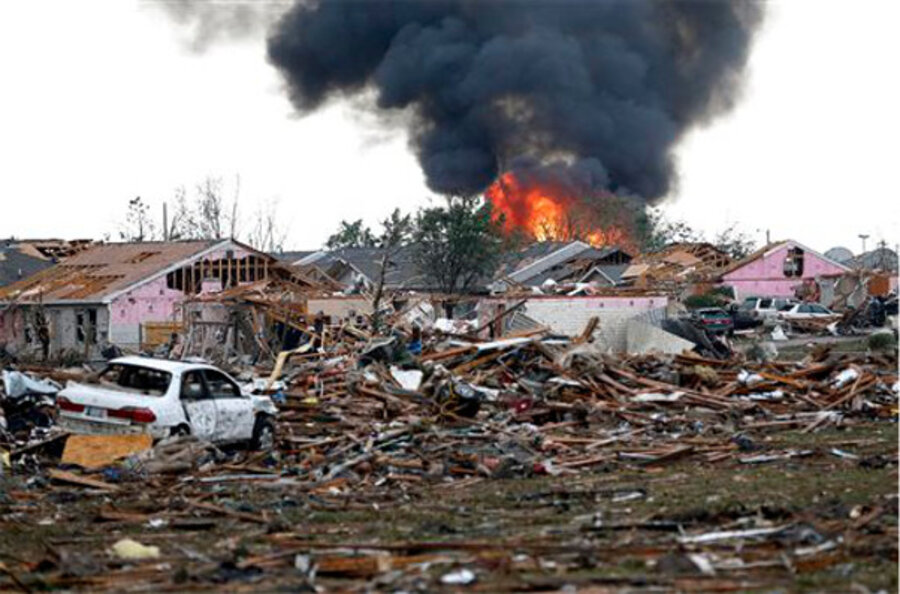Tornado season off to a late but deadly start
Loading...
| TULSA, Okla.
Deadly tornadoes that have raked communities in Middle America over the past week, including Monday's massive twister that carved a path of destruction through the Oklahoma City suburb of Moore, belie what had been a relatively quiet start of the 2013 tornado season.
In fact, this is the longest the U.S. has gone into May without registering an EF1 or stronger tornado, which are the types that can cause damage. That's according to Harold Brooks, a research meteorologist at the National Severe Storms Laboratory.
An unusually cool spring kept the funnel clouds at bay until mid-May, or about a month after they'd typically begin their deadly dance in this part of the country. But that calm melted away with the recent rise in temperatures and humidity in the Plains and Midwest that produced ideal temperatures for the tornadoes that have killed people in Oklahoma and Texas since last Wednesday.
"What had happened over the last week, and for quite a while there, was a ridge in the atmosphere that stayed over the western United States, and that is a pretty unfavorable pattern for tornadoes," said Brooks. "But, over the last few days, the ridge has moved east and the trough flow came over central United States. On Saturday, we got a lot of moisture that returned from Gulf of Mexico, and when you bring those ingredients together, something's going to happen."
Tornado strikes have fallen markedly in the U.S. since the 2011 season, when the country was hit over and over by killer twisters. April 2011 had 497 EF1 or stronger tornadoes, which are the types that can cause damage. That's not only a record, but it's more than the next two highest months combined, Brooks said.
From June 2010 through May 2011, there were 1,050 EF1 or stronger tornadoes, which was a record high for a 12-month period. Then just a year later, a record tornado drought began. From May 2011 through April 2013, there were only 217 tornadoes, 30 fewer than the old record.
This spring's unusually late start to the season was caused by unseasonably cool weather marked by unusual upper air patterns that suppressed storm development for much of the early tornado season, Brooks said.
As Monday's devastating touch down in Moore shows, a slow start of the season says nothing about how it how it could eventually shape up.
"It was quiet in February through April; that doesn't tell us anything that will happen in May," Brooks said.
As Moore residents frantically searched the wreckage of schools and homes destroyed by Monday's strike, communities elsewhere in Oklahoma and the region were bracing for the possibility of new funnel clouds or huge hail stones.
Hours before the Moore strike, National Weather Service meteorologist Peter Snyder predicted that twisters could touch down in the region and other areas to the east.
"There's a good environment for super cell development and it could develop a squall line that produces 70 mph wind and clusters of thunderstorms," Snyder said. "It's a similar situation (as Sunday) but it will affect points east today."
The deadly tornado strikes began Wednesday, when a twister outbreak in North Texas killed six people and injured dozens of others, many in the community of Granbury. A massive storm system that moved through the Plains and Midwest on Sunday produced tornadoes in Kansas and Iowa, but it was Oklahoma that bore the brunt of the destruction, with at least 39 injured throughout the state and two deaths from a tornado strike near Shawnee, 30 miles east of Moore.
Associated Press Science Writer Seth Borenstein in Washington, D.C., contributed to this report.







